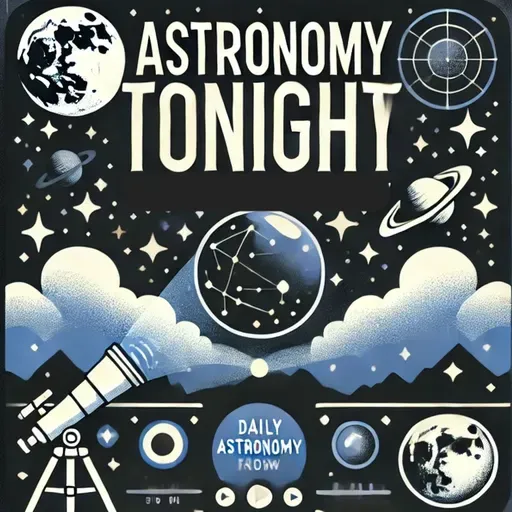
About
This is your Astronomy Tonight podcast.
On this day, September 5th, in the year 1977, we witnessed one of the most ambitious space exploration missions ever launched: Voyager 1. This intrepid spacecraft, along with its twin Voyager 2, embarked on a grand tour of the outer solar system that continues to this day, nearly half a century later.
Picture this: It's the late 1970s. Disco is king, bell-bottoms are all the rage, and NASA decides to throw a cosmic frisbee into the depths of space. Voyager 1, weighing about as much as a subcompact car, blasted off on a journey that would make Marco Polo's expeditions look like a trip to the corner store.
This plucky probe has given us some of the most iconic images in astronomy. Remember that pale blue dot? That's us, Earth, captured by Voyager 1 in 1990 from a distance of about 3.7 billion miles. Carl Sagan described it as "a mote of dust suspended in a sunbeam." Talk about putting things in perspective!
But Voyager 1 didn't stop there. It's the first human-made object to enter interstellar space, breaking through the bubble of our solar system's influence in 2012. It's now over 14 billion miles from Earth, still sending data back to us using less computing power than your average smartwatch.
And let's not forget the golden record - a time capsule of Earth's sounds, music, and images, just in case any aliens fancy a crash course in human culture. Maybe someday, in a galaxy far, far away, some extraterrestrial DJ will be spinning "Johnny B. Goode" at an interstellar disco.
As we speak, Voyager 1 continues its lonely journey into the cosmic unknown, a testament to human curiosity and engineering prowess. It's expected to keep communicating with Earth until about 2025, which means it's in its final days of contact. So let's raise a toast to this incredible machine, still going strong after all these years.
If you want to keep up with the latest in space exploration and astronomical discoveries, don't forget to subscribe to the Astronomy Tonight podcast. And for more fascinating content across various topics, check out QuietPlease.AI. Thank you for listening to another Quiet Please Production. Keep looking up, space fans!
On this day, September 5th, in the year 1977, we witnessed one of the most ambitious space exploration missions ever launched: Voyager 1. This intrepid spacecraft, along with its twin Voyager 2, embarked on a grand tour of the outer solar system that continues to this day, nearly half a century later.
Picture this: It's the late 1970s. Disco is king, bell-bottoms are all the rage, and NASA decides to throw a cosmic frisbee into the depths of space. Voyager 1, weighing about as much as a subcompact car, blasted off on a journey that would make Marco Polo's expeditions look like a trip to the corner store.
This plucky probe has given us some of the most iconic images in astronomy. Remember that pale blue dot? That's us, Earth, captured by Voyager 1 in 1990 from a distance of about 3.7 billion miles. Carl Sagan described it as "a mote of dust suspended in a sunbeam." Talk about putting things in perspective!
But Voyager 1 didn't stop there. It's the first human-made object to enter interstellar space, breaking through the bubble of our solar system's influence in 2012. It's now over 14 billion miles from Earth, still sending data back to us using less computing power than your average smartwatch.
And let's not forget the golden record - a time capsule of Earth's sounds, music, and images, just in case any aliens fancy a crash course in human culture. Maybe someday, in a galaxy far, far away, some extraterrestrial DJ will be spinning "Johnny B. Goode" at an interstellar disco.
As we speak, Voyager 1 continues its lonely journey into the cosmic unknown, a testament to human curiosity and engineering prowess. It's expected to keep communicating with Earth until about 2025, which means it's in its final days of contact. So let's raise a toast to this incredible machine, still going strong after all these years.
If you want to keep up with the latest in space exploration and astronomical discoveries, don't forget to subscribe to the Astronomy Tonight podcast. And for more fascinating content across various topics, check out QuietPlease.AI. Thank you for listening to another Quiet Please Production. Keep looking up, space fans!